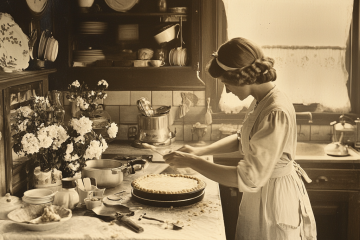About the author: Naomi Broderick is a prepper author working with Protect Your Home, who provides ADT security systems in Phoenix, Arizona. She is a stay-at-home mother with three young boys, and she enjoys promoting the prepping lifestyl e among folk from all walks of life.
e among folk from all walks of life.
Parenthood Preps: Preparedness with Baby on Board
As everyone in the prepper community knows, there are plenty of unfair stereotypes about what an average prepper looks like due to pop culture depictions and selective media coverage. Despite what the majority would like to think, preppers aren’t loners, and they aren’t outsiders huddled in bunkers full of pinto beans. I strongly believe that all of us have prepper inclinations at some point in our lives – whether or not we wear the “prepper” label. But the difference lies in the fact that we choose to act rather than simply wait for disaster to strike.
In particular, parents are always in the habit of anticipating disaster with their children. I’ve written previously about how parents are much like preppers in their desire to prepare. They gather supplies and modify their environments to prevent emergency situations. In this way, prepping for a baby is just like any other prep that we’d engage in. It’s our natural instinct to anticipate the worst, which is why I advocate for parents to realize these inclinations and take the logical step towards preparedness.
However, many are concerned that raising children as preppers might result in bullying or emotional problems as they grow. I believe that with the right parenting practices, prepping presents no dangers to a child’s social and emotional growth. Here are a few ideas I’ve had in making preparedness easy and safe for parents when raising their children:
Explain the reasons that your family preps
If there are two things that I know about children as a mother of three young boys, it’s that A) children ask a lot of questions and B) they tend to overgeneralize constantly. The greatest problem that prepping can cause for children is to cause them to turtle up and become frightened of everything in the world. Poor communication, or even a complete lack of it, can be a bad combination with preparedness.
I remember when Caleb, my oldest son of seven years, was concerned about why we kept so many dehydrated foods and canned goods in supply when he noticed that they only kept fresh foods at his friend’s home.
I answered cheerfully as I prepared some fresh fruit leather, “So we don’t go hungry in case we have to stay home for a while.” Always the inquiring mind, Caleb came back with an even more concerned voice: “Why would we have to stay home?” After a pause, I answered slowly. “I always want to provide for you and your brothers, even when the power goes out or when the weather is too bad to get to the store.”
Diving into the gruesome details of every possible outcome that your preps are working to prevent is not a great idea, but leaving them clueless about why your family prepares when other families don’t can give them some troubling thoughts. I’ve found that the best way to approach prepping is to explain things simply, and without heavy emotional attachment.
Perform drills and plan with them
One of the best ways to make something comforting for children is to make it routine. This is a lesson we already know as parents when it comes to teaching them how to brush their teeth, take a bath, and make their bed. I believe safety practices, such as knowing how to lock and secure doors, windows, and home alarms are only a starting point that should become routine practices for children in this same way.
In this piece, I spoke at length about “drillercising” with children to improve a household’s safety practices while normalizing practices that might otherwise frighten or confuse them. Working with children on going over safety plans and routes, the contents of their bug-out bags, and “what-if” scenarios are all fantastic ideas in promoting safety awareness.
One of my favorite ways of reinforcing this information is by playing teacher when it comes to good household habits, especially in regards to safety. Handing out little quizzes now and then kept them surprisingly entertained, and eager to demonstrate what they learned.
This handful of tips is just what I’ve practiced in order to make prepping as a parent more manageable and normal for my children. I believe that there is so much more that can be done for prepping parents when it comes to including children on their readiness plans. What are your thoughts on bringing children on board for our preps? How would you engage them when it comes to preparedness?



3 Comments
John Axsom · November 3, 2013 at 3:56 am
Great article. This goes to
Great article. This goes to show you that more and more people are joining the prepardeness movement. I saw one statistic that said that there are now 3 million preppers out of the 330 million people living in the States. That means 1 in 330 people are preppers. Thanks to this website, YouTube, and NatGeo…more and more people are becoming preppers. As we see our health care system crumble right before eyes, military weakened, and draconian taxes forced upon us by elite politicians…it will require more and more people to become preppers if we are to save our way of life.
carolyn · November 3, 2013 at 10:41 pm
I can see practicing with
I can see practicing with bugout bags by having a surprise trip to a park, campground, a relatives, etc. Then use the food, toys, etc when you are there. They get used to using the bags, changing things out as their interests change, and I would think it would be less ‘scary’ should a real event arise. Any thoughts?
acea · November 5, 2013 at 6:09 pm
Sounds like a great idea!
Sounds like a great idea!
Comments are closed.